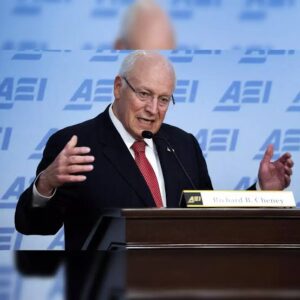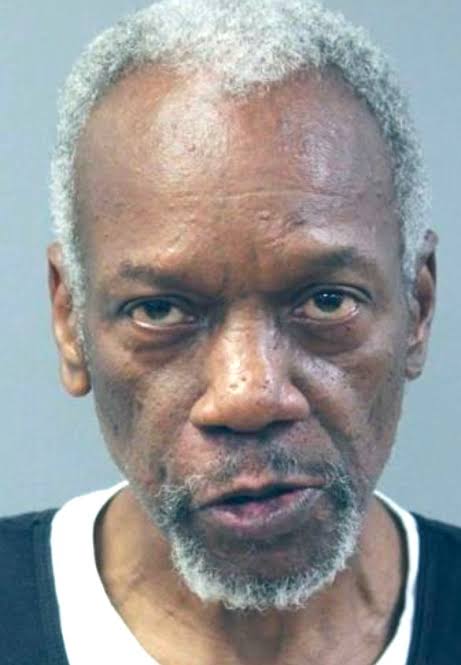Dick Cheney health problems: cause of death,still alive,Live now

Who helped lead the country into the ill-fated Iraq War based on misconceptions. Today we will discuss about Dick Cheney health problems: cause of death,still alive,Live now
Dick Cheney health problems: cause of death,still alive,Live now
Dick Cheney, the 46th Vice President of the United States (2001–2009) under President George W. Bush, remains one of the most influential and controversial figures in modern American politics. Known for his powerful role in shaping U.S. defense and foreign policy, Cheney also carried a long, complicated medical history. His ongoing battle with heart disease lasted nearly five decades and became an essential part of his public narrative.
This article explores Cheney’s extensive health problems, focusing on his cardiovascular history, medical interventions, lifestyle, and eventual cause of death. It offers a detailed timeline, medical analysis, and lessons learned from his remarkable survival and eventual passing.
1. Early Life and the Beginning of Heart Troubles

Richard Bruce Cheney was born on January 30, 1941, in Lincoln, Nebraska. He grew up in Casper, Wyoming, and began his political career early, working in the Nixon and Ford administrations before serving as a congressman and later as Secretary of Defense.
But long before he became Vice President, Cheney’s health issues began to shape his life. In 1978, at just 37 years old, he suffered his first heart attack. This early onset of cardiovascular disease marked the beginning of one of the most medically challenging journeys ever experienced by a major U.S. political figure.
Several factors contributed to Cheney’s heart problems. He had a strong family history of heart disease, and he was a heavy smoker for many years—reportedly up to three packs of cigarettes a day. Smoking, combined with a high-stress lifestyle and possible genetic predisposition, accelerated the buildup of plaque in his arteries, leading to multiple heart attacks and other complications later in life.
2. Timeline of Major Cardiac Events
Cheney’s health history reads like a medical textbook on coronary artery disease and modern cardiac care. Below is a timeline summarizing his major events and treatments.
| Year | Event | Medical Details |
|---|---|---|
| 1978 | First heart attack | Occurred at age 37. Early signs of coronary artery blockage. |
| 1984 | Second heart attack | Required hospitalization and medication adjustments. |
| 1988 | Third heart attack | Underwent quadruple bypass surgery to restore blood flow to his heart. |
| 2000 (Nov) | Fourth heart attack | A mild heart attack during the 2000 presidential campaign; received a coronary stent. |
| 2001 (June) | Defibrillator implant | Doctors inserted an implantable cardioverter-defibrillator (ICD) to prevent sudden cardiac death from arrhythmia. |
| 2010 | Fifth heart attack | Severe event leading to implantation of a left ventricular assist device (LVAD), a mechanical heart pump. |
| 2012 (March 24) | Heart transplant | Received a donor heart after waiting nearly two years on the transplant list. |
| 2025 (Nov 3) | Death at age 84 | Died from complications related to pneumonia and long-term cardiac and vascular disease. |
3. Living With Recurrent Heart Disease
Multiple Heart Attacks
Between 1978 and 2010, Cheney suffered five separate heart attacks. Each episode weakened his heart muscle and required increasingly advanced treatments. After his third heart attack, he underwent a quadruple bypass surgery, a complex procedure that redirected blood flow around blocked arteries. Despite successful surgery, new blockages continued to develop over time.
Stents and Defibrillator
In 2000, just weeks before taking office as Vice President, Cheney experienced another mild heart attack and received a stent to open a narrowed artery. The following year, doctors implanted a defibrillator beneath his skin to monitor and correct life-threatening irregular heart rhythms automatically. This step underscored the seriousness of his condition even as he held one of the most powerful political positions in the world.
Mechanical Heart Pump
By 2010, Cheney’s heart function had deteriorated so much that doctors implanted a left ventricular assist device (LVAD), a mechanical pump that helps circulate blood. The LVAD sustained his life while he awaited a transplant but came with challenges: the device required batteries, daily monitoring, and posed infection risks. During this period, Cheney lived without a detectable pulse, as the LVAD produced continuous blood flow rather than the natural beating motion of a heart.
4. Heart Transplant and Recovery
In March 2012, at age 71, Cheney underwent a successful heart transplant at Inova Fairfax Hospital in Virginia after being on the transplant waiting list for more than 20 months.
The procedure was life-saving. Following the transplant, Cheney described feeling “fantastic” and credited modern medicine and his donor for giving him a new lease on life. He wrote about the experience in his memoir Heart: An American Medical Odyssey, co-authored with his cardiologist.
After the transplant, Cheney’s quality of life improved significantly. He was able to return to normal activities such as fishing, traveling, and spending time with his family. For several years, he remained stable, managing his new heart through immunosuppressant medications and close medical supervision.
5. Lifestyle, Risk Factors, and Medical Management
Cheney’s case highlights the importance of lifestyle choices in managing heart disease. Several factors played critical roles in the development and management of his condition:
Smoking
Cheney was a heavy smoker for decades, quitting only around the year 2000. Smoking is one of the leading risk factors for coronary artery disease, contributing to the narrowing and hardening of arteries that lead to heart attacks.
Stress and Workload
His political and corporate responsibilities were famously demanding. As Vice President during wartime and post-9/11 security crises, Cheney faced immense stress. While he dismissed suggestions that stress caused his heart problems, chronic stress is known to elevate blood pressure and contribute to cardiac strain.
Diet and Exercise
In later years, after his surgeries and transplant, Cheney adopted a more heart-healthy lifestyle. He emphasized moderate exercise, careful diet, and strict adherence to medical recommendations.
Medical Monitoring
Cheney was under continuous cardiac monitoring for decades, including regular scans, blood tests, and check-ups. His access to advanced medical technology and top cardiologists was a major factor in his longevity.
6. The Role of Technology in Extending His Life
Cheney’s survival illustrates the evolution of cardiac medicine from the late 20th to the early 21st century. His treatment history shows how rapidly medical technology advanced during his lifetime:
-
Bypass surgery (1980s) was revolutionary for re-routing blocked arteries.
-
Angioplasty and stents (1990s–2000s) helped reopen narrowed arteries without major surgery.
-
Implantable defibrillators (2001) prevented sudden cardiac death.
-
Left Ventricular Assist Devices (2010) allowed patients to live while awaiting transplants.
-
Heart transplantation (2012) represented the ultimate life-saving measure.
Through these innovations, Cheney lived more than four decades after his first heart attack—an extraordinary feat by any medical standard.
7. Public Transparency and Health in Office
Cheney’s health was a frequent topic of media discussion during his time as Vice President. Many wondered whether his medical condition could affect his ability to serve. The White House regularly released updates about his health status, test results, and procedures to maintain transparency.
Despite the severity of his disease, Cheney remained active throughout his two terms, demonstrating resilience and determination. He later acknowledged that his decision to continue working at such an intense level may have come at personal risk, but he believed it was his duty to serve.
8. Later Years and Cause of Death
After more than a decade of relatively stable health following his 2012 transplant, Cheney’s condition began to decline in his mid-80s. On November 3, 2025, he passed away at the age of 84. His family announced that he died from complications of pneumonia combined with chronic cardiac and vascular disease.
Pneumonia is a known danger for transplant recipients and individuals with weakened immune systems due to lifelong use of immunosuppressant drugs. In older adults with a history of heart disease, infections like pneumonia can quickly lead to heart failure and multi-organ complications.
Cheney’s death marked the end of a long battle with cardiovascular illness that had defined much of his adult life. His family described him as passing peacefully, surrounded by loved ones.
9. Lessons from Dick Cheney’s Health Journey
Cheney’s medical story is both a cautionary tale and an inspiring example of human resilience and medical progress.
9.1. Early Detection and Prevention Matter
Heart disease can begin silently and at a young age. Cheney’s first heart attack at 37 shows that even seemingly healthy individuals can harbor serious risk factors. Regular check-ups, cholesterol control, and quitting smoking early can prevent such outcomes.
9.2. Modern Medicine Can Extend Life — but Prevention Is Key
Cheney benefited from cutting-edge medical procedures and technology that prolonged his life far beyond what was possible in earlier generations. However, lifestyle modification and preventive health remain the best defense against heart disease.
9.3. Resilience and Mindset
Despite recurring hospitalizations, surgeries, and medical crises, Cheney continued to work and live actively for decades. His persistence demonstrates that chronic illness, while life-altering, need not end one’s ambitions or contributions.
9.4. Importance of Donor Awareness
Cheney often spoke about his gratitude toward his heart donor and their family. His story highlights the critical need for organ donation and the life-saving impact it can have on people with end-stage heart failure.
10. Medical Perspective on Cheney’s Survival
From a cardiological standpoint, Cheney’s survival for nearly half a century after his first heart attack is exceptional. The average survival rate after multiple heart attacks is much lower, especially when compounded by reduced heart function.
What allowed him to live so long?
-
Consistent, top-tier medical care.
-
Early adoption of life-saving technologies.
-
Access to pioneering treatments.
-
Strong adherence to medication and monitoring.
His case underscores the progress of cardiovascular medicine—from invasive surgeries to minimally invasive procedures and advanced mechanical and transplant therapies.
11. Legacy Beyond Politics
While Dick Cheney’s political legacy will forever stir debate, his medical journey stands as a testament to perseverance and scientific advancement. His experience humanized the struggles of heart disease, reminding millions that even the most powerful figures are not immune to health challenges.
Cheney also helped raise awareness about heart disease through public statements and his memoir. By candidly sharing his story, he contributed to broader discussions on prevention, early detection, and cardiac research.
12. Summary Timeline
| Year | Event |
|---|---|
| 1941 | Born in Lincoln, Nebraska |
| 1978 | First heart attack (age 37) |
| 1984 | Second heart attack |
| 1988 | Quadruple bypass surgery |
| 2000 | Fourth heart attack; stent inserted |
| 2001 | Defibrillator implanted |
| 2010 | Fifth heart attack; mechanical heart pump (LVAD) |
| 2012 | Heart transplant at age 71 |
| 2025 | Died at 84 from pneumonia and cardiac complications |
13. Final Reflections
Dick Cheney’s life was defined not only by political power but also by medical endurance. His decades-long struggle with heart disease demonstrates how far medicine has come — and how personal discipline, access to care, and determination can prolong life even in the face of overwhelming odds.
His passing in 2025 closed a remarkable chapter in both American politics and medical history. From his first heart attack in the 1970s to a successful transplant in his seventies, Cheney’s journey stands as a compelling study of human resilience, the limits of the body, and the extraordinary capabilities of modern medicine.
How useful was this post?
Click on a star to rate it!
Average rating 0 / 5. Vote count: 0
No votes so far! Be the first to rate this post.
About the Author
usa5911.com
Administrator
Hi, I’m Gurdeep Singh, a professional content writer from India with over 3 years of experience in the field. I specialize in covering U.S. politics, delivering timely and engaging content tailored specifically for an American audience. Along with my dedicated team, we track and report on all the latest political trends, news, and in-depth analysis shaping the United States today. Our goal is to provide clear, factual, and compelling content that keeps readers informed and engaged with the ever-changing political landscape.




